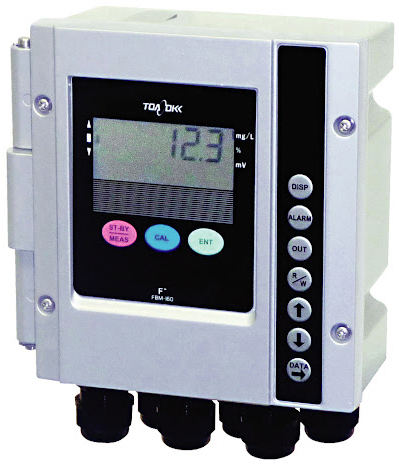ASIA ELECTRONICS INDUSTRYYOUR WINDOW TO SMART MANUFACTURING
Novel Water Analyzers Play Huge Role in IC Fabs
Semiconductor manufacturing makes use huge amount of water and chemicals. DKK-TOA Corporation has introduced analyzers indispensable for monitoring the quality of pure water and wastewater from upstream to downstream.
With the global trend to increase semiconductor production, plans to build new factories are up and coming. Thus, DKK-TOA is looking for further opportunities of delivery of its products.
Various stages in semiconductor manufacturing require huge amount of water. These stages including washing of wafers, washing away chemicals, and diluting and adjusting the concentration of chemicals, among others.
A semiconductor factory consumes several thousand tons of water a day. Water undergoes several stages of cleaning before a factory sees it fit for consumption.
First, the cleaning process involves removing of impurities by filtering from raw water coming river and industrial water. Then, the water goes through ultra-fine filters before they become ultrapure water, or theoretical pure water, with an electrical resistivity of 18.24MΩ·cm.
The high-purity water has large electrical resistance. Therefore, the electrical resistivity is one of the criteria for the ultrapure water, along with the number of fine particles, the number of ions, and dissolved oxygen, indicating the number of foreign substances.

Ensures Ultrapure Water Accuracy
AQM-100A is a resistivity meter for quality control of the ultrapure water. Here, it involves water sampling and measuring by connecting to a pipe (flow cell) branched from the pure water plant in the factory. Because the accuracy of the ultrapure water affects the quality of semiconductor products, its analysis before use in the manufacturing process is indispensable.
Yuji Yamagishi, Executive Officer, Director of Overseas Sales Division, said, “It is always necessary to ensure the accuracy of the ultrapure water by using an analyzer.”

The etching process of forming thin film materials using chemical reactions and in the cleaning of substrates uses hydrofluoric acid. It is highly toxic. Therefore, the drainage standards for chemicals containing hydrofluoric acid are very strict.
The FBM-160 fluoride ion monitor is a device that measures the fluoride ion concentration in the sample water. The measurement involves an ion electrode equipped with a sensitive film (lanthanum fluoride) that reacts with fluorine.
Meanwhile, the NHMS-4 ammonium ion measuring device is also used when draining water. Ammonia is also toxic. Its concentration requires continuous monitoring using a diaphragm-type ion electrode equipped with a pH electrode.
Preserves Environment, Too
Zero waste is also the important issue in semiconductor factories. For example, when evaluating the ultrapure water, pH (hydrogen ion concentration) meters and measuring instruments that utilize the resistivity can perform measurement without using reaction reagents. On the other hand, the liquid inside the comparison electrode required for the pH meter cause pollution of the sample water. Thus, the measurement with a resistivity meter should not contaminate the sample because it uses only the electrodes without a chemical solution.
The company is working to develop analytical instruments and environmentally friendly products that lead to reagent saving to reduce the number of operating reagents.
Semiconductor factories, particularly in East Asian countries, require these analyzers for semiconductor manufacturing. The need for new factories would increase the demand for these analyzers.
Inquiries from manufacturers in Japan have increased in the last 1 to 2 years. Tomoyuki Ikegaya, General Manager, Sales Strategy Department, said believed the Taiwanese market has strong influence among Japanese manufacturers.




